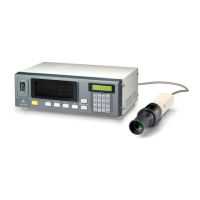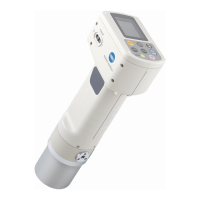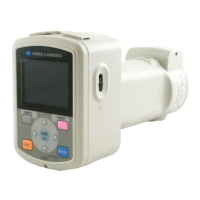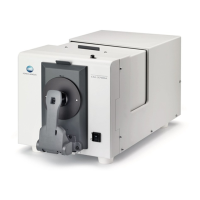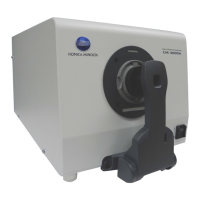Lv Tcp duv Color Space
When this instrument is set to display the color mode Lv Tcp duv, the following values can be
measured.
L
v : Luminance
Tcp : Correlated color temperature
duv : Color difference from black body locus
The L
v Tcp duv color mode expresses luminance with Lv and color with Tcp and duv.
< Relation between correlated color temperature Tcp and color difference from black
body locus duv >
Color temperature refers to the temperature of a black body (perfect radiator) which has
equal chromaticity coordinates to a certain light. Consequently, color temperature can be
used to represent colors only on black body locus.
Correlated color temperature, slightly wider interpretation of color temperature, is very
useful to eliminate this problem. Here, correlated color temperature covers colors which
are slightly outside the range of black body locus.
If a certain color is positioned on an isotemperature line, the intersection point of the
isotemperature line and black body locus is indicated as the correlated color temperature
for the color. An isotemperature line means a line on the chromaticity coordinate system
which is a set of colors visually close to the color temperature on the black body locus.
However, since all colors on one isotemperature line are represented with the same
correlated color temperature, it is not possible to describe colors only with correlated color
temperature. To solve the problem, duv, or deviation of correlated color temperature Tcp
from the black body locus, is used.
If duv exists above the black body locus, it is represented with “+”, and below, with “-”.
v
u
Black body
locus
Correlated color
temperature T
cp
0.30
0.35
0.20 0.25 0.30
duv
2300K
3000K
5000K
13000K
Relationship between correlated
color temperature T
cp
and duv
99
Explanation and
Information
COLOR
TEMP.

